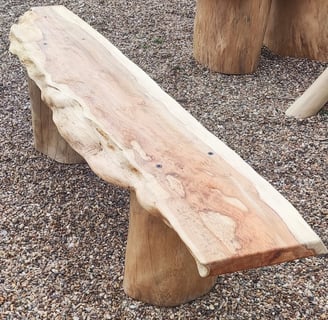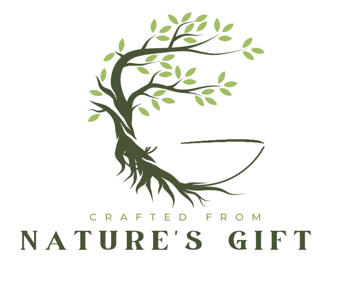From Forest Floor to Furniture
The Story of Fallen Trees and Sustainable Craftsmanship"
10/22/20244 min read


During the Harvesting Connections Long Table Project many questions came up us. One of these being How Many Trees Fall Each Year, and What Happens to Them?
We all know trees are a vital part of our world—providing oxygen, shelter, and materials we use every day. I remember as a child the save the rainforest campaigns making an impact. This was all about the tree we intentionally cut cut down, but then I realised I had never thought about how many trees natures takes out, How many trees naturally fall each year versus how many are intentionally cut down until we started on the Long table what was the number and look at how we use trees sustainably, especially when nature takes its course and a tree falls on its own how often do we make use of these?
The Big Picture: How Many Trees Are Cut Down Each Year?
I really couldn't believe what I found outEvery year, about 15 billion trees are cut down around the world. That’s a mind-boggling number! These trees are harvested for things we use every day: timber for building, paper for books and packaging, and even as fuel for heating and cooking. Some trees are also cleared to make space for farmland, cities, and industrial projects.
Most of the trees that are cut down each year are felled intentionally. Forests are managed for this purpose, with some trees being cut while others are planted or left to grow, aiming for a balance between harvesting and replanting. Still, the rate of deforestation—especially in places like the Amazon rainforest—outpaces replanting efforts, causing a net loss of about 10 billion trees each year. that is a staggering number!
What About Fallen Trees?
Naturally fallen trees—those that come down because of storms, strong winds, old age, or disease—are a much smaller part of this overall picture. While it’s hard to say exactly how many trees fall naturally each year, it’s nowhere near the billions that are cut down on purpose.
When trees fall naturally, they often stay where they land. In wild forests, fallen trees break down over time, returning nutrients to the soil and providing habitats for insects, birds, and other wildlife. This natural process helps keep ecosystems healthy and thriving.
But what about using these fallen trees? In many cases, especially in managed forests, parks, or estates, naturally fallen trees can be repurposed. Instead of leaving them to rot, they can be turned into something useful—like furniture, sculptures, or even firewood. This is a sustainable way to use wood without cutting down more trees.
Why Are Fallen Trees Important for Sustainability?
Using fallen trees is a great example of sustainability in action. When a tree falls naturally, it's like nature offering us a gift, and making use of that gift can help reduce the need for cutting down additional trees. Here are some creative and practical ways fallen trees are used:
Furniture and Art: Crafting furniture or art from fallen trees connects people to nature’s beauty. Each piece is unique, shaped by the tree’s natural growth.
Firewood: In many rural areas, fallen trees provide an important source of firewood for heating and cooking.
Habitat Creation: Sometimes, trees are left where they fall to provide homes for wildlife, which is crucial for supporting biodiversity.
Take, for example, our Chiswick House Long Table Project. We’re using wood from fallen trees on the estate to create a beautiful, one-of-a-kind long table. This isn’t just any table—it’s a piece of Chiswick’s history, made sustainably, without cutting down any new trees. The fallen trees we’re working with get a second life, transformed into something that future generations will enjoy.
Intentional Logging vs Naturally Fallen Trees
The difference between the 15 billion trees that are cut down each year and the relatively small number of fallen trees lies in how they’re used. Most trees harvested for wood products come from intentional logging—forests specifically managed to supply timber and paper.
By contrast, fallen trees that we come across in estates, parks, or forests may not always be suitable for commercial use. But they’re perfect for creative projects and smaller-scale wood products, like the one we’re working on at Chiswick House. Plus, using these fallen trees means we’re reducing waste and promoting a more sustainable approach to forestry.
How Can We Make a Difference?
The good news is that there are many ways to use trees more sustainably and reduce the impact of deforestation. Here are a few ideas:
Support sustainable products: Look for wood products certified by groups like the Forest Stewardship Council (FSC), which ensures that trees are harvested responsibly.
Plant trees: Whether it’s in your garden or through an organisation, planting trees is one of the best ways to combat deforestation and ensure future generations have healthy forests. there are also many companies that plant trees when you purchase from them or use their products
Repurpose fallen wood: Give new life to fallen trees get creative think and about what and how the tree could be used. Could it be carved into a piece of art? Made into a bench or a table?
While most of the trees we use each year come from intentional logging, naturally fallen trees present a unique opportunity. They remind us that nature offers resources in its own time, and when we use those resources wisely, we’re helping to protect the environment for the future. At Chiswick House, we’re proud to be part of this effort with our Long Table Project, where fallen trees are being transformed into something beautiful and lasting.
By making conscious choices, from using fallen trees to supporting sustainable forestry, we can all play a part in keeping our forests and woodlands healthy and thriving.






Nature, Artistry, Sustainability
Transforming nature into beautiful, functional creations.
Harvesting Connections
ayeshaweekes@gmail.com
07958487488
© 2024. All rights reserved.
